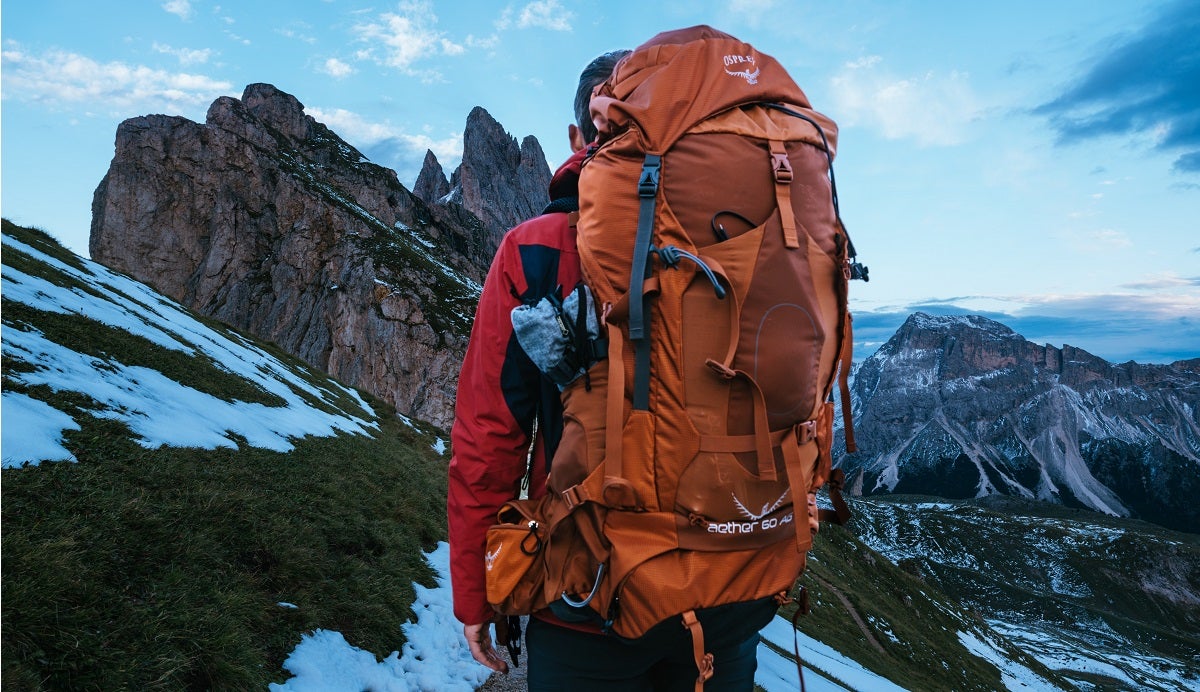
Our Editors independently research, test, and rate what we feel are the best products. We use affiliate links and may receive a small commission on purchases.
Choosing the right backpack for your hike is as important as the hike itself, as you will be bound to carry your hiking gear and supplies for a certain (long) amount of time. So, you need to be very careful and know exactly what to look for in a hiking backpack.
Here are some important features you should really consider before spending your money.
#1 Choosing the right size/volume
This is the number one element on our list and it should be the first thing you ask yourself when buying your backpack for hiking.
- If you are packing for a weekend, meaning you are going to be away from one to three nights then you are going to need a backpack with a volume of 30-50 liters. With this one, you have to be practical and carefully plan the amount of food and gear to carry.
- Multiday hiking backpacks have a capacity of 50 to 80 liters, which is more than enough room to cram up the supplies you are going to need. Three to five days long hikes require some extra supplies, so buying a backpack this size is going to come in handy for sure.
- Going on an extended expedition, maybe five or more nights? Then opt for a backpack that has a volume of no less than 70 liters. Keep in mind that you are going to need lots of hiking essentials and provisions.
#2 Choose a frame type (or frame-less)
There are three types of hiking backpack frames that you need to take in consideration: internal-frame backpacks, external-frame backpacks, and frameless backpacks.
- Internal-frame backpacks are designed in such a way so as to keep a hiker stable and balanced. More often than not, these types of packs have a smaller profile, but offer the carrier to be aligned with their own center of gravity when conquering a tough area. This is very important, as going on an off-trail hike can lead to injuries if the load on the back is not properly fitted. So, internal-frame hiking backpacks are comfortable and feel like an integral part of the body, offering freedom of movement.
- External-frame backpacks have their own purpose and are favorable in plenty of other ways. For example, they have a fair amount of more than useful compartments, which you can use to fill up with all the critical items you need within arm’s reach. Also, they have greater ventilation, giving a hiker some breathing space on the back.
- Frameless backpacks are great for those who need fewer zippers and straps, fewer compartments, and generally less of everything else. Seriously though, these backpacks are much cheaper, plainer, and incredibly convenient for hiking masters and all those who are exceptionally light and professional packers.
#3 Finding the right fit
You are going to need an expert for this one. There is probably a specialist available to help you in selected, well-equipped stores, or you can just google the instructions on how to find the perfect fit. In any case, it is important to remember just a couple of things: a backpack should be appropriate for your torso length and should be supported by your hips, so as to distribute weight evenly.
#4 Deciding on the suitable suspension
Once you’ve selected the correct size, frame type and fit, you also need to decide on the suitable suspension of your backpack, as it is very important to feel comfortable lugging all that weight. To get the suspension right for your needs, you have to take into consideration one important fact: the heavier the pack load, the more significant the suspension.
For example, if you are carrying up to 10 pounds the suspension can be minimal; but if you are about to put some 40 or more pounds on your back, than you, my friend, need a substantial suspension with a thickly padded hip belt. So, you need to find a hiking backpack with an appropriate hip belt; comfortable shoulder straps that curve to your body shape anatomically; and high quality contoured or padded back panel.
#5 Important details
Do you need a water-resistant hiking backpack or the one that includes a rain cover? Do you need multiple pockets with lockable zippers, and, if so, then what kind? Do you prefer a backpack with front loading or top loading? The one that has a sleeping bag compartment or hydration reservoir?
Carefully think about the things you need and expect from your pack. Oh, and just to make things more complicated for you, did you know there are backpacks that have a solar panel which generates power so that you can easily charge your electronic devices?

